Seaside hostels in Tuscany

It was only in the early 19th century that the therapeutic benefits of the marine climate began to be recognised also in Italy. The first studies were soon followed by facilities expressly designed for to accommodate children affected by tuberculosis. These seaside establishments, built initially in Versilia, were to be the archetype of a chain of marine hostels systematically built in the Fascist epoch.
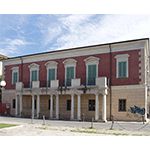
The beneficial effects of seawater
Starting from the middle of the 18th century, the beneficial effects of thalassotherapy were studied by some British physicians, who proposed seawater bathing and sea air for therapeutic purposes. In the 18th and 19th centuries the great European nobility - from George III of England to Napoleon Bonaparte - had practised bathing in the sea. Around 1820 Paolina Bonaparte Borghese had a villa built facing the sea at Viareggio. A few years later there were built - among the first in Italy - two wooden bathing establishments with square layout, rising over the sea on piles, formed of dressing rooms, service areas and stairs to descend directly into the water. One of these was for men, the other for women. They formed little "islands" for seawater therapy, not yet having entered the sphere of places of leisure and entertainment. On June 29, 1822, the grand-ducal government issued the first official document in Italy regarding "those who bath in the sea in the open air", called 'Regulations for service and good order in seaside bathing establishments'.
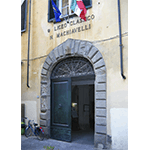
The Italian situation at the start of the 19th century
In the early 19th century in Italy, the beneficial effects of thalassotherapy were generally denied. Renato Fucini, in his story La strega [the witch] tells of a doctor in the countryside around Pisa who had recommended seawater and sea air as therapy for a sick child, but was considered a charlatan by the parents, who preferred the advice of the village "witch" to his. Under the scientific profile, however, in 1817 the Treatise on seawater baths by the Englishman Alexander Peter Buchan, the first of its kind to appear in Italy, was translated and published in Pisa.
Within this cultural and social context was inserted the work of the physician from Lucca Giuseppe Giannelli, professor of "Medical Material" at the Liceo Universitario of Lucca. In 1823, at the recommendation of Giannelli, the Management of the Hospitals and Hospices of Lucca had begun to experiment at Viareggio with "marine therapy" for children from the orphanage. But it was only ten years later, in 1833, that the doctor from Lucca published a systematic work on the effects of seawater on the human body, titled Manuale per i bagni di mare (Manual for seawater bathing). This work inaugurated a season that was soon to lead to the proliferation of a broad-ranging scientific literature. After a brief historical note on the use of seawater baths, Giannelli analyzed the composition of seawater, indicating its beneficial effects in the treatment of various pathologies (scrofula, rickets, rheumatism, epilepsy, intermittent fever and skin diseases).
He compared the results of his research with those reported in the major scientific publications, focussing special attention on scrofula - a non-pulmonary tubercular disorder whose symptoms included abscesses in the neck, the armpits and the groin. This was a very common disease, especially among children, which affected the lymphatic system, often with a lethal outcome. The disease was contracted especially in very poor environments and was worsened by malnutrition.
A nineteenth-century view of scrofula
Giannelli combated this disease not only as a physician, but also as a husband, having witnessed the death of his young wife, powerless to intervene. Particularly significant, in this regard, are the words he used to describe the state, psychological as well, of the woman affected by scrofula:
"The woman who possesses from birth such an organic constitution unites to beauty, for the most part, a great deal of spirit and an exquisite sensitivity: so that she becomes almost a shadow due to this very severe scrofulous infection, and nonetheless interesting for her sweet, affectionate nature, as well as for the vivacity of her imagination, and for a patient and unchanging resignation. Due to which, sad and pitiable to the highest degree must be esteemed the condition of those who, either out of duty or for their profession, or the most sacred bonds, are obliged to bestow cures and to be amiable at the same time. And certainly no one can know this better than myself, who for scrofulous consumption had to see my own wife in the flower of her years drink death in long sips, without even being able to save her from those accompanying pains inseparable from such inexorable infirmity", G. Giannelli, Manuale per i bagni di mare, Lucca, Ducale Tipografia Bertini, 1833, pp. 87-88.).
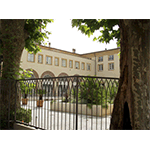
The first seaside hostel at Viareggio
In 1842 a seaside hostel was instituted in Viareggio, located in Via della Caserma, under the management of the Lucca Hospital. This was the first institution established in Italy for the treatment of children affected by non-pulmonary tuberculosis. The doctors from Lucca, Giuseppe Giannelli and Antonio Ghivizzani, were among the promoters and sponsors of the initiative. All traces of the building were destroyed by the bombing of World War II.
In 1872 the Province of Lucca, having taken note of the inadequacy of the building in Via della Caserma, decided to erect a new and more capacious building, named after Umberto I. The structure, located between Palazzo delle Muse and the church of San Paolino, could accommodate six hundred children a year. A memorial stone at the entrance to the building bore the following inscription:
"FIRST IN ITALY
A MODEST SEASIDE HOSTEL
OPENED AT VIAREGGIO FOR ITS CHILDREN
THE MANAGEMENT OF THE HOSPITALS OF LUCCA
BY DECREE OF THE PROVINCIAL REPRESENTATIVES
TO THE HEALTHFUL BENEFIT
OF POOR SCROFULOUS CHILDREN
THIS ROSE FROM ITS FOUNDATIONS
IN THE YEAR 1874
UNDER THE SUPERVISION OF THE ENGINEER AND
ARCHITECT COMM. P. POLI»
In 1911 a permanent hostel to accommodate the most severely ill children was also established. For this purpose, the building that is now the barracks of the Carabinieri was used, with around seventy beds placed in it. The permanent facilities had a therapeutic function only, while the temporary ones served mainly for prevention.
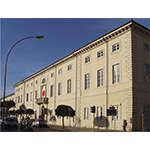
The seaside hostel of Florence
In 1846, only four years after the founding of the Lucca Seaside Hostel, Giuseppe Giannelli died in Viareggio. The seed he had sown for the treatment of scrofula victims was to be cultivated still further by the Florentine Medical-Physical Academy, thanks especially to the Florentine physician Giuseppe Barellai.
Barellai, himself suffering from tuberculosis, constituted in Florence in 1853, in the Palazzo del Bigallo, a Committee for the realisation of a treatment centre for children affected by scrofula. To collect the necessary funds, various intellectuals were involved. Viareggio was chosen as the place in which to built the heliotherapy institute.
Barellai expended great energy in promoting the establishment of these facilities, publishing many articles and actively participating in the various congresses that were held in the peninsula. The beneficial activity of the Florentine doctor is recorded on a memorial stone placed by the Commune of Florence on the façade of his house in Via de’ Neri .
On October 14, 1861 the first stone of the Florence Hostel was laid at Viareggio, in Piazza Mazzini.. The building, known as the Palazzo delle Muse, was completed in 1869. Barellai himself explained the significance of the name: 'This building is jokingly called among the members the Palace of the Muses, because the money spent to build it was acquired especially by the work and the donations of those who cultivate the fine arts, such as architects, painters, sculptors, lyric poets, dramatic poets and illustrious playwrights' (G. Barellai, Gli Ospizi Marini d’Italia, Florence, 1867).
In 1893 the Palazzo delle Muse was enlarged, giving it a capacity of five hundred beds. Starting in 1912 the facility, which until then had been active only during the summer, was transformed, according to Barellai's original plan, into a permanent hostel.
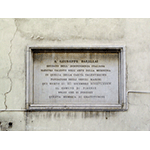
The "crippled" and the "hunchbacked"
The growing fortune encountered by Viareggio in the early years of the 20th century was the cause of argument over the use of the Piazza Mazzini area, which, subsequent to the urban expansion of the town, was acquiring a central position. Designating the square to tourist facilities was an idea that began to take shape among some cynical land speculators devoid of any feeling of solidarity or respect for suffering. A clear minority looked with great disdain at Barellai's initiative, and began to refer to the children in the hostels as "cripples" and "hunchbacks" who were going to be salted down in the sea. Barellai took up the challenge and gave the name "hunchbackology" to the medical speciality in which he was engaged, and "hunchbackologists" those who studied it and recommended it as therapy.
In 1939, after over half a century of activity, the Florence Seaside Hostel was moved to Cinquale, near Forte dei Marmi, where a big modern facility was built, named after Giuseppe Barellai. In July 1944, the new building was mined and razed to the ground by the German troops. Among the ruins was found a portrait bust of Barellai, the work of the Florentine sculptor Giuseppe Zocchi, the only tangible remains of the hospital.
The spread of seaside hostels in the 19th and 20th centuries
In the 1860s, in the wake of the example set by the Florentine committee, other committees that promoted seaside hostels were established in Tuscany, in Liguria ad along the Adriatic coasts. In 1882 twenty-one seaside hostels were active in Italy, many of them promoted by Barellai. But the activity of the physicians Gaetano Pini in Milan, Moisè Raffaello Levi in Venice and Giuseppe Berruti in Turin should also be recalled. Another illustrious advocate of the utility of thalassotherapy and heliotherapy was the physician and Darwinian anthropologist Paolo Mantegazza. To the therapeutic-healthcare aspect, he added the moment of freedom and pleasure, inviting Italians to save money for a sojourn at the sea "at least once every two or three years". It was thus that medical science favoured the first seaside tourism.
The tubercular origin of many forms of scrofula became clear with the discovery of Koch's bacillus. This led to the distinction between rickets, tuberculosis and other pathologies, with the consequent diversification of the hostels, resulting in the establishment, along with the seaside hostels, of similar facilities in the mountains or at thermal baths.
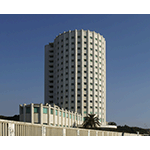
Children's holiday camps during Fascism
The history of the seaside hostels encountered the ideological path of Fascism. The summer camp was entrusted with the task of contributing to the physical and moral health of the Italians under the direct control of the National Fascist Party and the local Fascist Federations. The program organised for the Italian "balilla" and young girls called for dividing the day into moments strictly defined according to a military model, with minor variations among the individual camps.
Over a short span of time, in many Italian marine and mountainous localities, citadels of childhood were constructed, in some cases thanks to big industries. During the Thirties, well over three hundred summer camps were built, many of them situated on the Marchigiano-Romagnola coasts. Imposing edifices, however, were also built along the Tyrrhenian coast.
In 1933 at Marina di Massa the Edoardo Agnelli Seaside Hostel (former Balilla Tower, then known as the Fiat Tower) was built, and, between 1936 and 1938, the Turin Hostel. Other great building complexes were constructed along the coastline between Pisa and Livorno. Noteworthy among these are, at Calambrone, the seaside hostels called "Principi di Piemonte", "Rosa Maltoni Mussolini", "dei Fasci Italiani all’Estero", "Vittorio Emanuele II" e "Regina Elena".
The strong Fascist indoctrination imparted by the young women who ran the camps had a drastic effect on the formation of the children's personalities. The regime attempted to combine public welfare, and thus an aspect pertaining to the medical sciences, with the chance to standardise Fascist education with programs of "moral and civil re-edification". Within this context, the scientific aspect that had animated the first promoters of the seaside hostels gradually acquired a secondary role.
In the early Forties, as Italy entered the War, many seaside hostels were requisitioned and converted into military hospitals.
-
 Collegio del Calambrone [Calambrone Boarding School]
Collegio del Calambrone [Calambrone Boarding School] -
 Colonia Marina 'Edoardo Agnelli' (Torre FIAT) ['Edoardo Agnelli' Seaside Hostel (FIAT tower)]
Colonia Marina 'Edoardo Agnelli' (Torre FIAT) ['Edoardo Agnelli' Seaside Hostel (FIAT tower)] -
 Colonia Marina Torino [Turin Seaside Hostel]
Colonia Marina Torino [Turin Seaside Hostel] -
 Ex Colonia Marina dei Fasci Italiani all'Estero [Former Seaside Hostel of the Italian Fascist Organisations Abroad]
Ex Colonia Marina dei Fasci Italiani all'Estero [Former Seaside Hostel of the Italian Fascist Organisations Abroad] -
 Ex Colonia Marina Principi di Piemonte [Former Princes of Piemonte Seaside Camp]
Ex Colonia Marina Principi di Piemonte [Former Princes of Piemonte Seaside Camp] -
 Ex Colonia Marina Rosa Maltoni Mussolini [Former Rosa Maltoni Mussolini Seaside Camp]
Ex Colonia Marina Rosa Maltoni Mussolini [Former Rosa Maltoni Mussolini Seaside Camp] -
 Ex Colonia Marina Vittorio Emanuele II [Former 'Victor Emanuel II' Seaside Hostel]
Ex Colonia Marina Vittorio Emanuele II [Former 'Victor Emanuel II' Seaside Hostel]
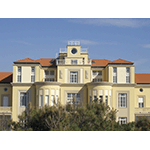
Seaside hostels in the postwar years
In the postwar period following World War II, parallel to the assignment of some facilities to other uses, there was an increase in private initiative. In the summer camps of the great industries, which sent the children of their personnel to the seaside or the mountains in periodic shifts, the ideological training of children in the old and now detested Fascist rhetoric had been abandoned.
At Marina di Massa, in the mid-Forties, the Marino Olivetti Holiday Camp, designed for the children of personnel working in the factory of Adriano Olivetti, was built to the project of the architects Annibale Fiocchi and Ottavio Cascio. And at Marina di Grosseto, near the end of the Fifties, the "Giuseppina Saragat" Seaside Camp was inaugurated.
The slow decline of the summer seaside camps began in the Seventies. Although some of the facilities remain, many are now used for different purposes. The Turin Hostel at Marina di Massa, for example, will become a youth hostel, the Palace of the Muses in Viareggio is now the site of the Town Library, and the big camps at Calambrone are destined to become residential facilities for tourism.
****************************
Texts by Graziano Magrini
English translation by Catherine Frost
Last update 11/gen/2008


